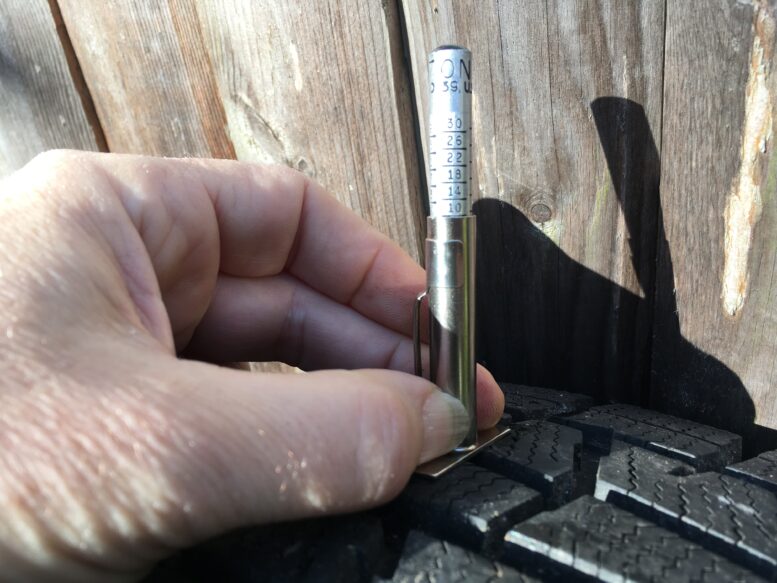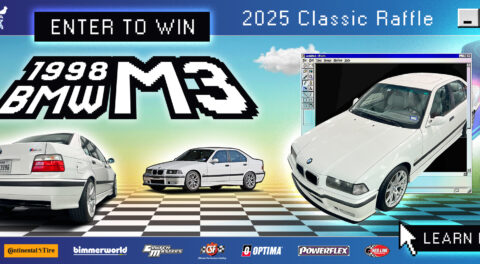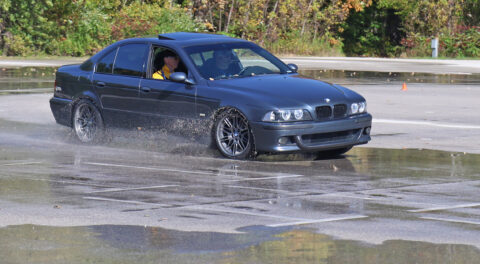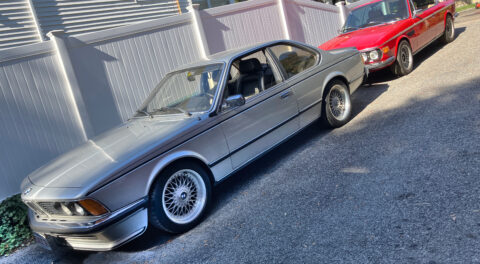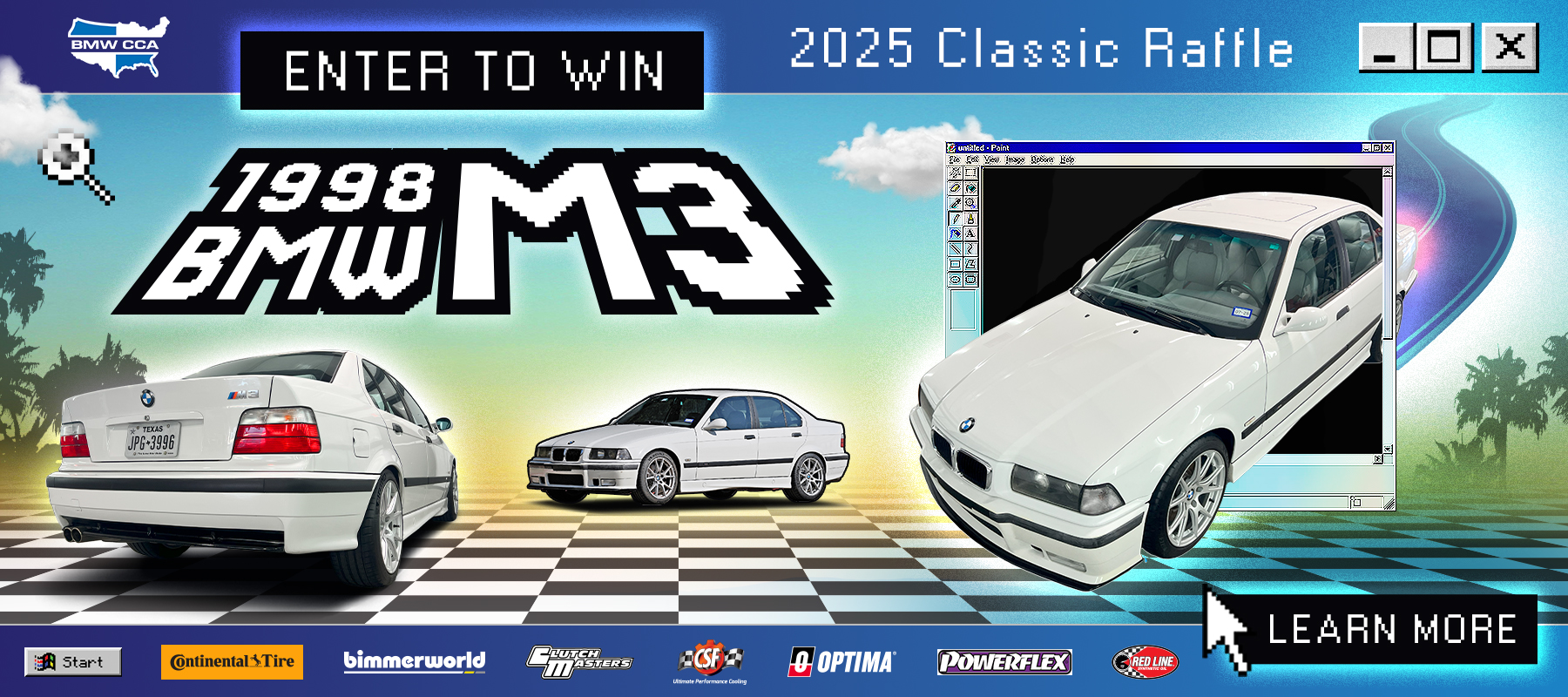Well, okay, maybe it’s not annual, but it feels that way.
Actually, what it feels like is somewhere between having a colonoscopy and wearing a hair shirt.
My 2003 E39 530i has been my daily for nearly ten years. I love it. But like most rear-wheel drive BMWs, there’s no deluding one’s self about its winter prowess—it can be nearly immobile in a flat parking lot with two inches of snow if it doesn’t have snow tires with decent tread on it. Owning 12 cars (hey, it’s down from 14) and no longer having a job I need to commute to means that my tires typically get too old before they get too worn. That’s particularly true for snow tires, as part of their magic comes from their soft rubber compound.
I try and economize with most things automotive so I can spend money on things that are completely indefensible (like installing air conditioning in the Lotus Elan +2), so I keep my eyes open for good used snow tires. You’d think it would be straightforward—just look for the correct size, with adequate tread, not too old, within an acceptable radius of your home, advertised at a good price, right? Or, better still, find a set of already mounted and balanced tires on wheels that fit your car. That way, you don’t need to pay for mounting and balancing, which is important because I find that more and more chain tire stores are refusing to mount and balance any used tires.
Adding wheels into the mix, though, is challenging. For the record, in order for a wheel to fit a car, it has to meet three criteria:
- It has to have the correct bolt pattern. Most BMWs are 5×120 except for old 3 Series and 2002s which are 4×100. As they say in math and logic, that’s a necessary but not a sufficient condition. Facebook Marketplace is full of ads that say “5×120 winter wheels. Fit any car.” And that’s simply not true.
- It has to have the correct offset (the distance of the edge to the center line, often stamped as “ETxx” on the inside of the wheel or inside the bolt circle). If the offset is too far inboard (the ET number is too large), the wheel can rub against the brake calipers or the tire can rub against the strut. Spacers can be used (within reason) to correct too-far inboard offset. If it’s too far outboard, the tires can rub against the fenders when you turn.
- It has to have the correct center bore to fit over the hub. If the bore is too small, they simply won’t fit. If it’s too big, hub-centric rings can be employed to properly center them. But really, it’s best to use wheels that fit without spacers and rings.
If the ad says “These were from a 2006 BMW 335Xi” or whatever the car was, then you can look up the specs and see if they’ll fit your car. But it’s absolutely astonishing to me how many sets of wheels and tires are out there with absolutely no information on what they’re from. Are there really that many people who abandon them in the basement of rented apartments?
When you see a set of wheels and tires for sale, if you don’t recognize the wheels as the original ones for your car, you can check them out and measure the center bore, and you can try to accurately measure the bolt circle, but really the only way to be certain they’ll fit is to bring a breaker bar and a floor jack and show up in the car you want to put them on, crack the lug nuts on one of the front wheels as they have the biggest calipers, jack it up, pull yours off, and mount one of the candidate wheels. It’s a pain.
And don’t get me started on tire condition and age. I realize that not everyone has a tread-depth gauge (though they should if they’re selling used tires), but geez, how hard is it to take a Lincoln penny, stick Abe’s head into the tread, and photograph it on all four tires? (FYI 9/32 of tread comes about to Lincoln’s nose.)
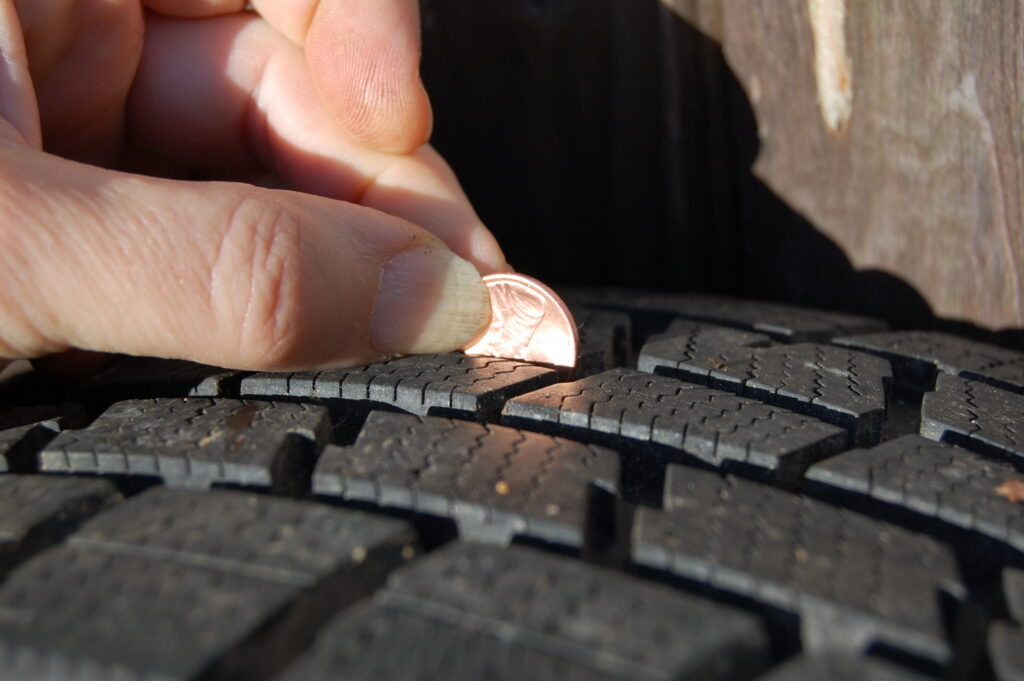
Is this REALLY that hard to do? Come on, people.
As far as age, every tire made since 2000 has a standard four digit WWYY date code on the sidewall (e.g., “4712” means the 47th week of 2012). There are typically a bunch of other numbers on the sidewall as well, but the date code is typically at the end of a string of numbers and letters beginning with “DOT.” Instead of looking for it and actually listing in the ad how old the tires really are, people say things like “Used for a couple of seasons” or “great condition.” Maybe that’s true, or maybe it’s like me who thinks “What do you mean the water heater died? We just replaced it,” then looks at the date on it and sees that it was done in 2015.
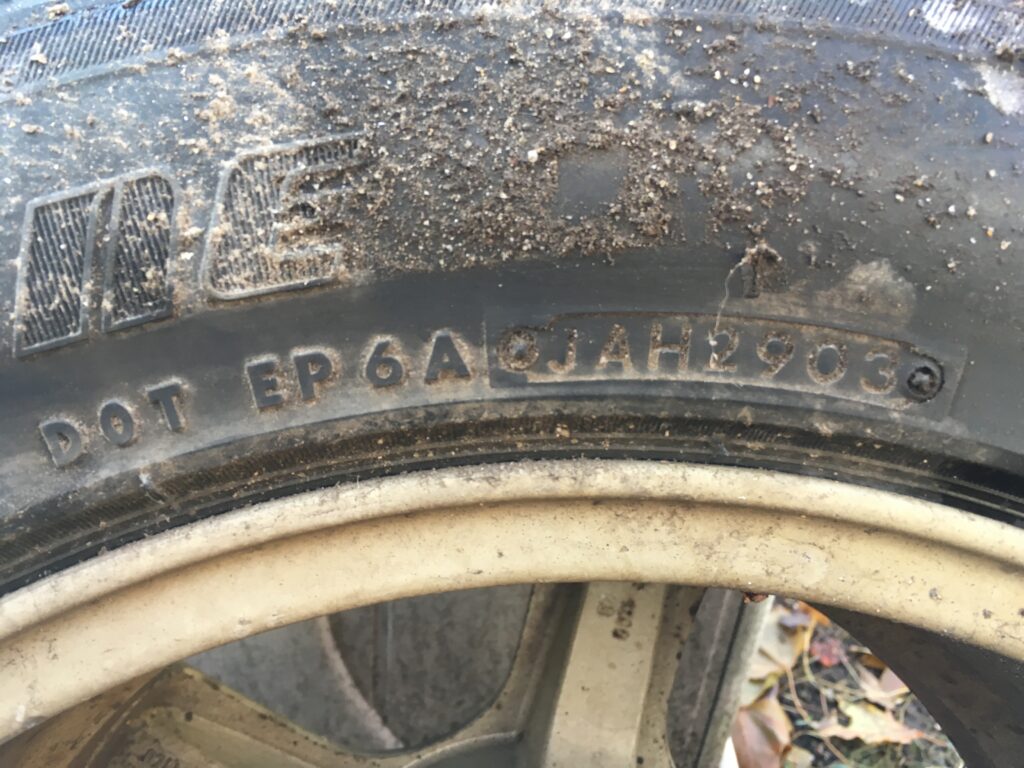
This tire was manufactured the 29th week of 2003. No matter how much tread it has, you don’t want it on your car.
People talk about finding the online ad for their dream romantic partner. You know, candle-lit dinners, long walks on the beach, must love dogs and all that. To me, my dream tire ad would read something like:
“Set of four Style 32 wheels from 1999 BMW E39 528i with 225/55R16 Bridgestone Blizzak WS90 tires. Tires have between 8/32 and 10/32 of tread. Date codes read 3823.” Succinct. Accurate. The information you need to know. IS THIS REALLY TOO MUCH TO ASK? Apparently, because I almost never see it. Except when I’m the one selling them.
Without this, you have to pull the information out of people like you’re extracting a splinter. I’ll see an ad for wheels and tires near me with an attractive price but zero information, download a photo, blow it up so I can read the tire size off the sidewall, and if they’re the right size, send a message asking what car they’re from. If they fit, I’ll send another message explaining that I’m very interested, but don’t want to waste their time or mine if the tires aren’t any good. I honestly don’t think that people are actively trying to withhold information. I think that most of them just don’t have a clue about fitment and the importance of tread depth and tire age, so when you ask for them to look for the date code and to photograph the head of a penny in the tread of all four tires, it’s either processed as “What a know-it-all jerk” or “Geez, guy must be on the spectrum” or “Why does this guy think I’m going to through this work for him?”
Nonetheless, I persist. I was late beginning the snow-tire-hunt this year (you want to be searching in July, not when it’s almost November), but the thought of putting the horrible set of mismatched aftermarket alloys and the soft-as-mush Toyo snows whose sidewalls have so much flex that I feel like I’m driving on burritos on the otherwise lovely-handling E39 for yet another winter drove me crazy.
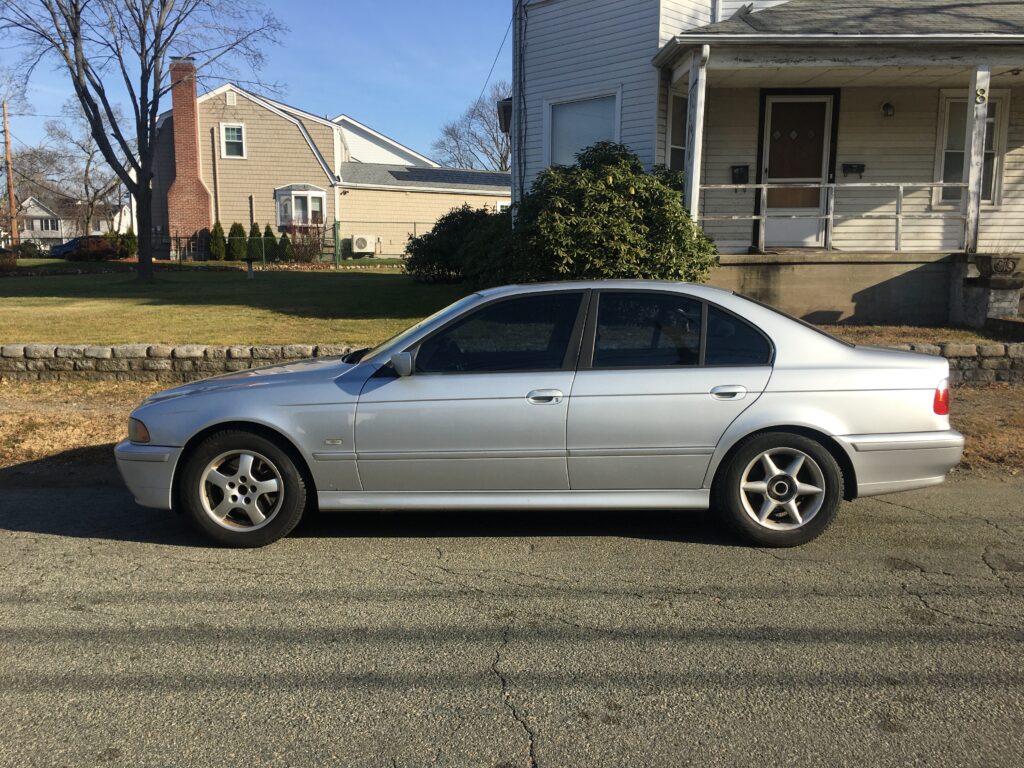
These really are a crime against man and god.
I found two sets of interest. The first was a good-looking set of Borbet alloys advertised on Facebook Marketplace with the minimal description of “225/55/R16 Bridgestone Blizzaks” down near the MA/RI line for $200. I messaged the seller to ask what they were off, and he said a 2000 540i. Perfect. Unfortunately, when I asked for the date code, I was told it read “3005.” They were 20 years old. Hey, at least he found it and told me. I politely declined.
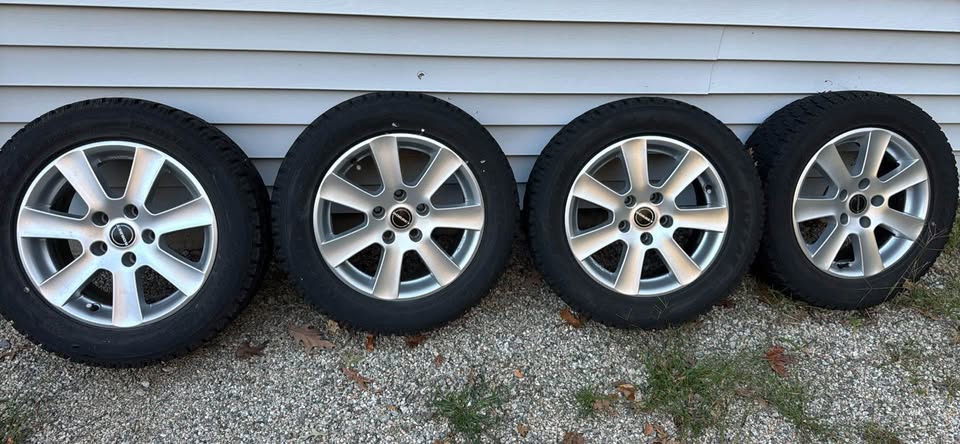
Looked good, but WAAAAAY too old.
I had high hopes for the next set. The Craigslist ad read “This posting is for BMW wheels 5X120 with Michelin X-ice winter tires. Tires have minimal wear and are in great condition.” These clearly were genuine BMW wheels, though not ones I was familiar with. One of the tricks I use is to look on the website bmwstylewheels.com and visually match up the wheel I see in an ad. I found that these were Style 82s from an E39 with an ET20 offset, so there was no doubt they would fit—no need for me to show up with a floor jack to test-fit them. And by downloading one of the photos and zooming in, I could make out the tire size, and it was correct for an E39 with 16-inch wheels—225/55R16. The asking price was $300. This was a bit more than I wanted to pay, but they were only up in Marblehead (about 45 minutes from me), and I had energy behind checking it off the fall to-do list.
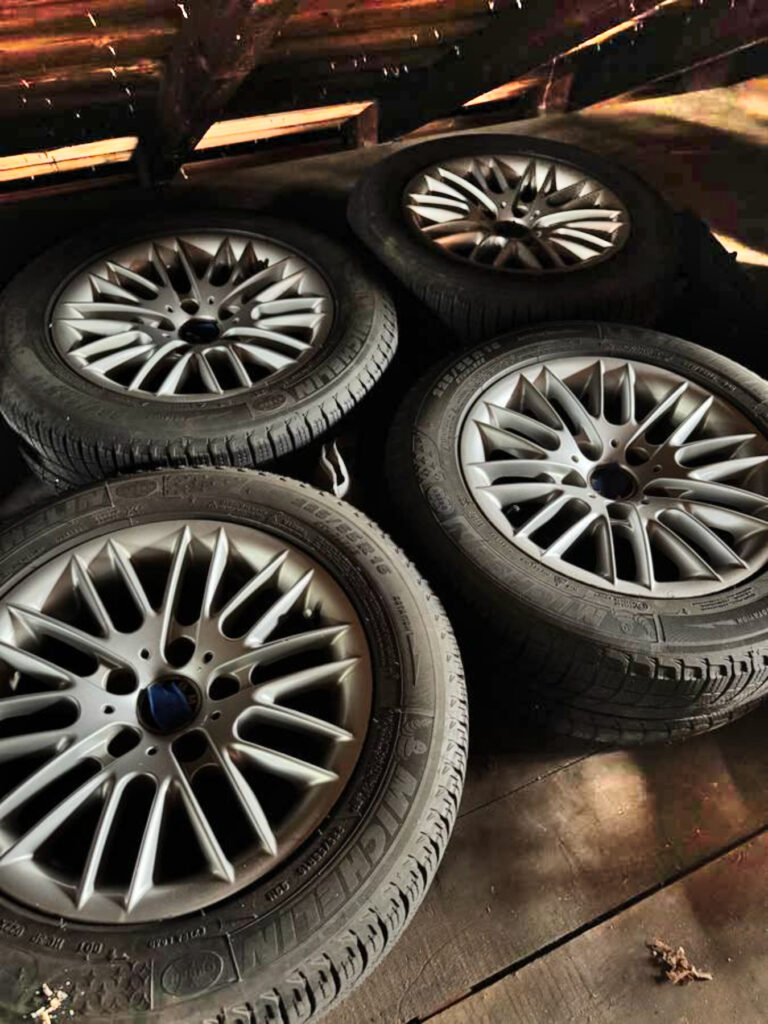
Nice looking wheels.
There wasn’t a tread depth measurement or a coin-in-the-tread pic, but the photo showing the tread certainly looked promising.
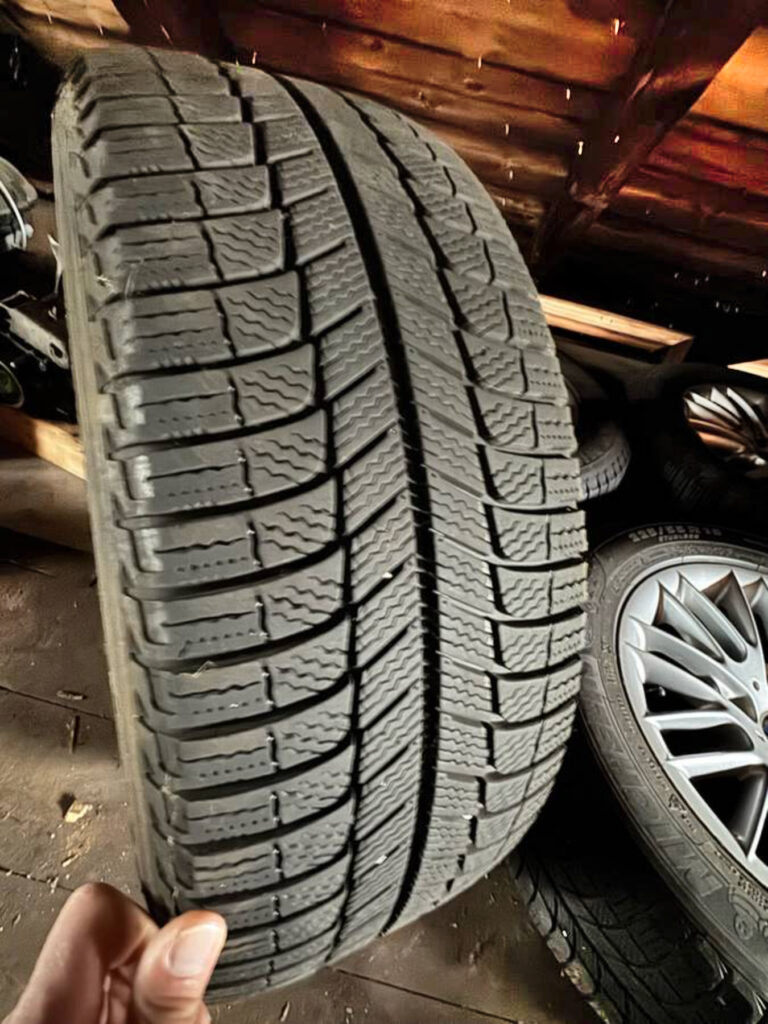
For $300, you’d go see these, right?
Once again, it came down to date codes. I swapped several messages with the seller. It turns out that it’s a small BMW world, and his father-in-law has a lovely Golf roundie 2002tii and owns my first book. The seller was representing the wheels for his brother, and they were located in the attic of their parents’ garage, so getting addition information required him to go back over there. I said that as long as the tires weren’t too old, I was quite interested. He said that they were probably a little more than five years old. I said that I didn’t have a hard and fast line on the age (it’s not that five years old was good but six wasn’t), but that if he could find the date code, that would definitively answer the question.
Later that evening, he sent me this:
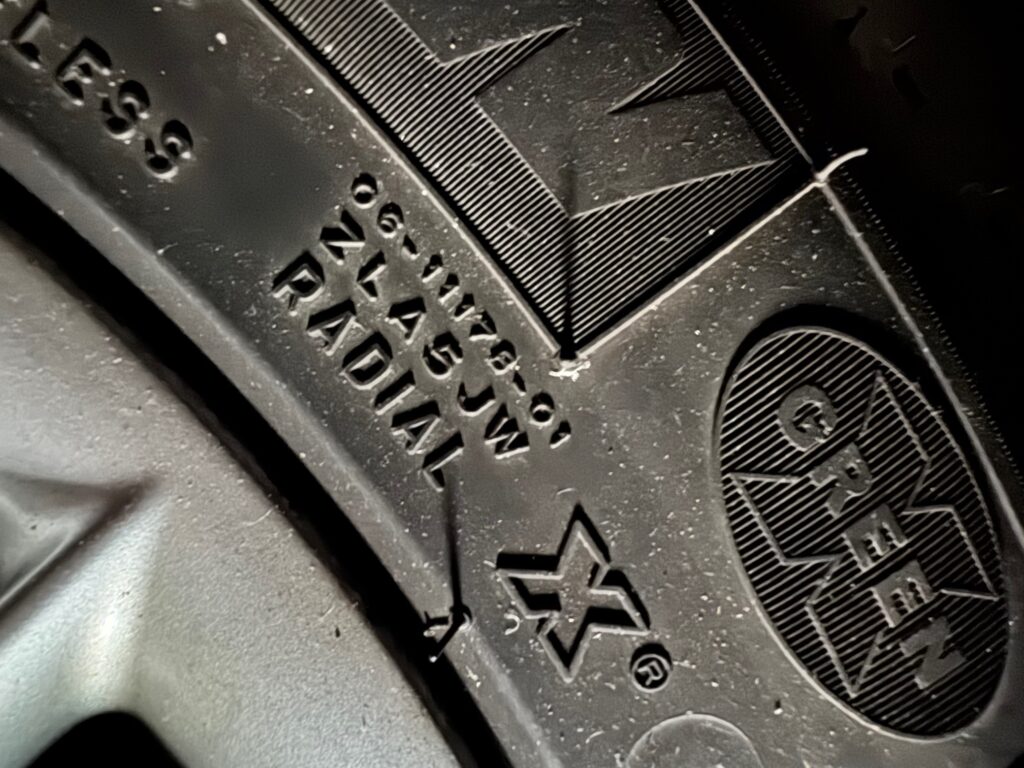
Nope.
And this:
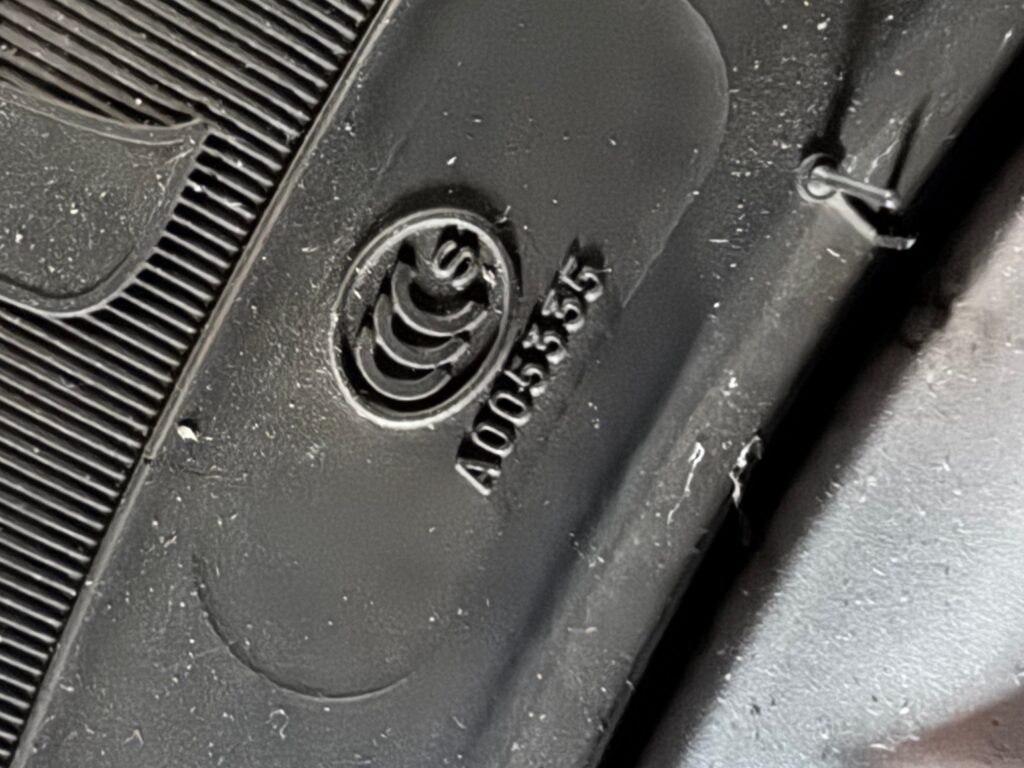
Nope.
And this:
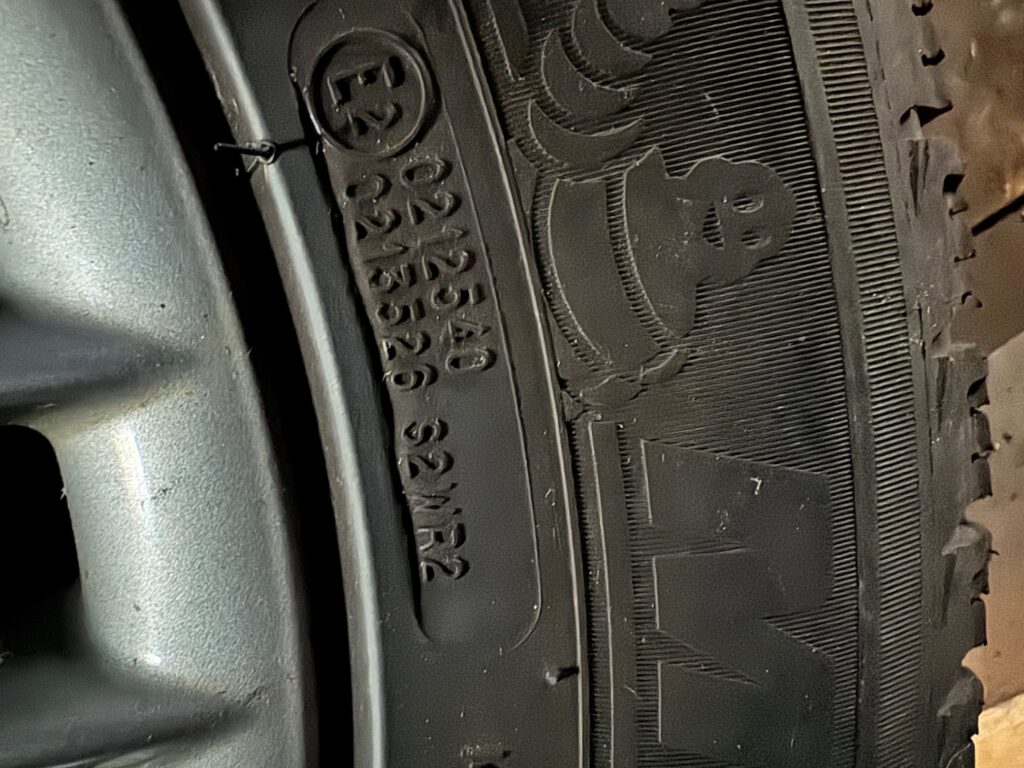
Nope.
I thought “yeah, none of these are date codes, but at least the sidewalls don’t show any dry rot.”
I looked on Michelin’s website, confirmed that the date code was of the four-digit “WWYY” variety, at the end of a string of letters and numbers that began with “DOT,” and sent that information to the seller. He said he’d try again to find it the following day.

Right from the tire guy’s mouth. The Michelin Man has a mouth, right?
The next morning, the seller sent me this:
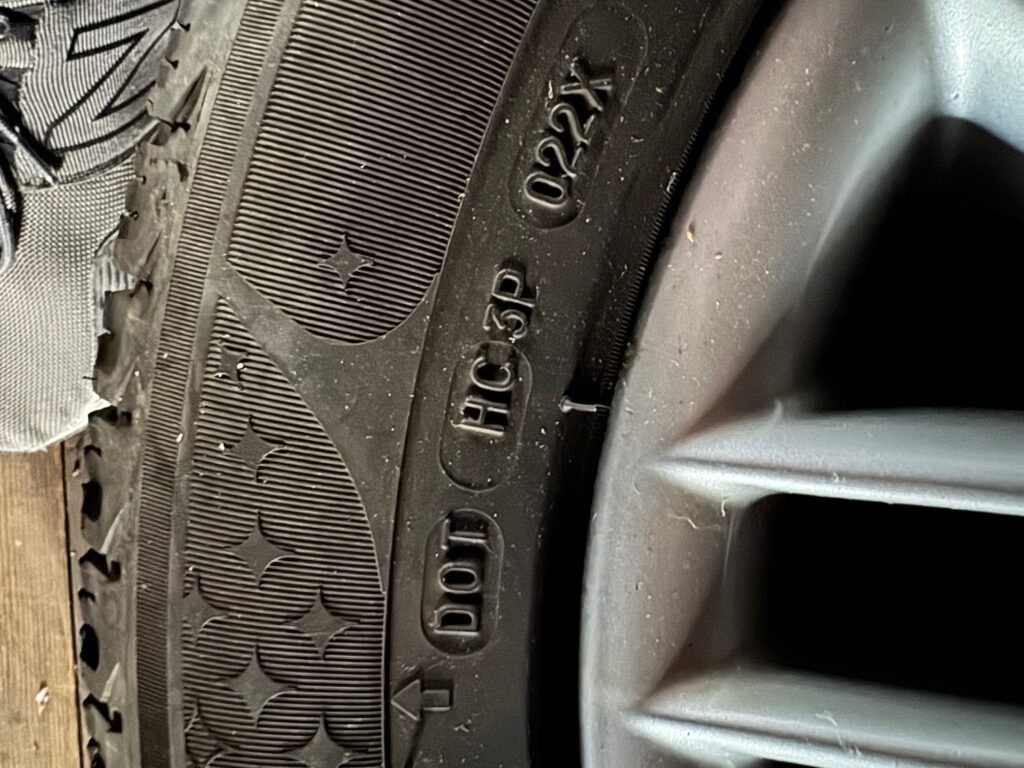
D’oh!
I saw that he was certainly trying. This wasn’t a lack of effort on his part. I replied “Yeah, this can be maddening, and I have no idea why there’s that DOT line without a real date code on the end, but there absolutely has to be a valid WWYY date code on the tire.”
Finally I said “Why don’t I just come over and have a look?” So on Saturday morning, I had a lovely drive in the E39 up to Marblehead. I met the seller, and we climbed the steep stairs up to the attic above the garage. The tires really did look good. I poked my tread depth gauge into all four. They all read between 8/32 and 9/32. As long as they weren’t too old, I was prepared to come home with them.
It took me a little while to find the date code, but when I did, my heart sank. It read 3214. These nice-looking tires were eleven years old.
The wheels were really nice, and part of me thought about making a low offer and being done with the hunt, but I wasn’t there for nice-looking wheels. I was there for a set of snow tires that was better than the ones I had. These weren’t them. The seller was a nice guy, but it still was a complete waste of time that should’ve been avoided.
My wife and I joke about how, when she goes to the supermarket and gets sliced meat or cheese, she asks the person behind the counter to hold up the first slice so she can inspect it, and how that means she’s turned into her parents. It’s not that my parents were difficult people regarding date codes on used tires, but I’ve now turned into the hard-ass car guy who is going to go full Rain Man on people and tell them “I’m not going to come look at your tires unless you can find the date code and tell me what it says.”
—Rob Siegel
____________________________________
Rob’s latest book, The Best of The Hack Mechanic, is available here on Amazon, as are his seven other books, including Just Needs a Recharge: The Hack Mechanic Guide to Vintage Air Conditioning. Signed copies can be ordered directly from Rob here.

